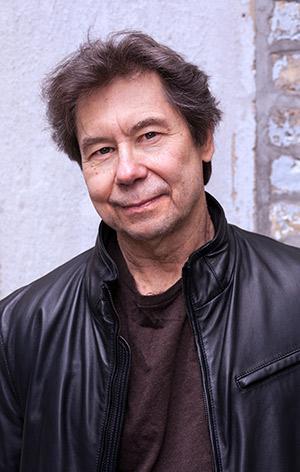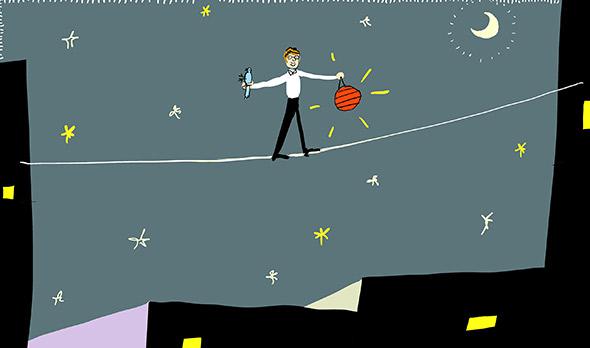For a while there the American short story was in dismal shape. It was never a problem of skill—many of the notable story collections of the 1990s and 2000s were technically beautiful, morally subtle, narratively refined—as much as a problem of tone. The stories that dominated the serious magazines and journals seemed to share a flat fireless quality, something like politeness, perhaps even fear. It was all so tasteful. The sense of drama was minimal. Characters dropped half out of love, or endured a minor crisis, or just wandered around treasuring their sense of dismay about, you know, the fallenness of the world. And above all, of course: that wheedling and constant push toward epiphany.
I think of John Updike’s 1961 story “A&P” as either the infectious agent or the patient zero of this style. It’s narrated by a teenager working in a grocery store, who quits on behalf of a group of girls his manager is hassling for shopping in bathing suits. They don’t even notice his gallantry, and in the last line of the story he leaves the store, looks back, and says, “and my stomach kind of fell as I felt how hard the world was going to be to me hereafter.”
What a line! No wonder its example has been intoxicating. Its vagueness expresses such a specific ache, and it expands the meaning of the story’s mild events so suddenly and deftly. Writers before Updike had used such a turn—think of “Araby” or “The Little Joke”—but his captured some modernist blend of longing, boredom, and elegy just beyond the speakable, which has lingered in the form ever since. John Cheever built a career on it; Jhumpa Lahiri won a Pulitzer Prize for her inflection of it; Wells Tower received rapturous praise for putting it inside of a Viking plunderer instead of a suburban housewife. All three of them are good writers, too. Alice Munro, whose stories may represent the apotheosis of that mood of precise, humane disaffection, is a great one.
Still, it’s been a thrill in the last five years or so to watch the revitalization of the genre by writers with more various and daring emotional aims. There was the shock of seeing Lydia Davis’ unprogrammatic shorts collected in a single volume, for instance, and one reason I think George Saunders’ Tenth of December was embraced with such joy, in fact nearly relief, is because it was full of stories in which stuff actually happened (serial killers! lottery victories!), with a kind of tender irony cutting back against any resulting hazard of melodrama. Of course, both Davis and Saunders have been at work for longer than five years—it’s critical favor that is catching up to them, along with writers like Joan Silber and Daniel Orozco, whose rejection of facile epiphany, whose range of tone and purpose, have perhaps expanded our expectations of short fiction. Or re-expanded them, maybe, to include the broadness of possibility that the short story had in the days before “A&P.”
The sheer commercial success of a book like Tenth of December is also heartening. When the MFA style was most influential, it had an insider’s feel, reducing short fiction to a coterie art—a campus art, unpurchased collections by the score whose jacket blurbs promised they would “unflinching,” “spare,” or “luminous.” Back in the heyday of the American short story, when the Saturday Evening Post made rich men out of F. Scott Fitzgerald and John P. Marquand, short stories and novels mattered equally, but for some time now most of fiction’s cultural weight has rested with the novel.
Popularity isn’t a good metric of artistic importance, but it isn’t an irrelevant one either. As I write this, Stuart Dybek’s 1990 short story collection The Coast of Chicago – a book that put him on the path to winning a MacArthur grant, a book that has a non-zero claim to be America’s Dubliners—has 19 user reviews on Amazon. By comparison: Freedom has 1,247, Divergent has 15,279, and there’s a white plastic colander with 72. (“It doesn’t get any better than this,” comments Wayne, who may need to do some soul-searching.)
Dybek has two new books coming out in June. One of them is excellent—Paper Lantern, a collection of nine stories on the theme of love. The other, Ecstatic Cahoots, is a glammed-up miscellany, full of short shorts and slightly longer shorts, many forgettable, many good, a few very good. He’s a gifted, attuned writer, and as he reaches his 70s, it may be that he’s due to rise into a new tier of regard, as Saunders did last year, or experience a moment of survey, as James Salter did. (The flashy covers FSG has put on the books suggest that they’re consciously positioning them that way.) But he also embodies the problematic recent history of short fiction. He’s never written a real novel, and he’s spent a lifetime teaching creative writing and publishing elliptical, plot-light short stories that mostly end up in that ineffable-sense-of-longing mode.
So: What will become of all those spare unflinching luminous writers who ran the shop for so long? And what claim should their work have on the attention of readers who now have other choices?
* * *

Photo courtesy Jon Randolph
The best story in Paper Lantern, a book full of good ones, is called “Tosca,” and it represents an enlargement of Dybek’s scope. His previous three books of stories were all focused narrowly and deeply on the tenement life of Chicago: “I had felt there was so much that should be recorded in the plain language that people spoke on the street, a language real and by nature subversive,” a character not at all unlike the author says in a story in Paper Lantern. He achieved that, particularly in The Coast of Chicago, whose different registers of speech are so beautifully and accurately calibrated. And yet those stories could sometimes feel small—made up of minor moments signaling indefinitely toward something larger, that aesthetic of restraint, or less charitably of listlessness, aloofness.
“Tosca” has bigger and odder aims. It begins by describing a firing squad about to shoot, but almost immediately breaks in with a discussion of firing squads in literature and opera; then after a few pages it departs the firing squad entirely, shifting into the first person to recall three different friends who have told the narrator across the years that they were living life “like an opera.” This sounds abstract, but Dybek’s voice and sense of humor (in a coffee shop, “each steamed demitasse sounded like a moon launch”) successfully bridge its sections.
Nearly all of Paper Lantern is interested in this kind of lateral rather than linear movement. In “Waiting,” the tale of a troubled relationship is interrupted by long essayistic thoughts about the concept of waiting in writers like Edith Wharton and Katherine Anne Porter (clearly a model of Dybek’s); in the masterful “Seiche,” he juxtaposes the narrator’s swims in Lake Michigan with the disappearance back to her homeland of a Persian girl with whom he’d been in love in college.
Workaday Chicago is still essential to Dybek’s worldview, and he can conjure its dirty grace effortlessly, writing of a streetcar that it’s “a vehicle part city, part dream,” or of the generations of pigeons homing in an alley, “their crap crusted like concrete … that smell of shit and feathers when it rains.” In his lesser moments, this ardor for the city does sometimes decline into urban sentimentality. His novel-in-stories I Sailed With Magellan was fatally weakened by its Billy Crystal–style lines, and here they are again: “Frank that sumnabitch noticed when I read the racing form we’d lose cause I’d pick the horses by their name. I mean, you see a horse named You Bet Your Dupa, well, you got to bet your dupa.”
Counterbalancing this mawkishness is Paper Lantern’s sophisticated use of magical realism, something with which Dybek has long experimented—he seems to me to have influenced writers like Jonathan Lethem and Karen Russell—and those impulses toward experimentation and fabulism are even stronger in Ecstatic Cahoots. Dybek is a poet too, and many of his shorts are poetic mystifications, Rimbaud-style snippets. There are a few excellent microfictions in Ecstatic Cahoots (“Belly Button,” in a few paragraphs, draws a whole immigrant world) but its longer stories are usually better. Its best one, “I Never Told This to Anyone,” about a boy living with an insane uncle who receives nightly visits from a pair of miniature newlyweds, is, like Tosca, a tour de force, but most of its companions don’t rise to that level.
Clearly, though, Dybek has spent much of the last 10 years taking chances in his fiction, developing in new directions. Despite that, though, what struck me most about Paper Lantern and Ecstatic Cahoots was that their formal adventurousness and their superb control were, ultimately, still working in the service of disappointingly minor emotional effects. It’s that “A&P” thing—the victory of the cautious insight, the small human revelation, that you find in Junot Diaz, Maile Meloy, Amy Hempel, in any number of writers, whatever their means of arriving there.
One of the best stories in Ecstatic Cahoots is “Cordoba,” and it’s of a different and more arresting timbre. In it, a man remembers the chance encounters he once had on his way home through a Chicago blizzard, stumbling into a bar full of Bears players and doing a shot with them, hitching a ride with a guy who keeps a gun in the glove box. It’s a spirited, funny piece, with the quality that made Tenth of December so good, or Hemingway for that matter, a certain novelistic richness that makes a story feel as if it’s about more than a single sensation.
But as we near the end we sense what’s coming, and then it comes:
If I rang again, I knew she wouldn’t answer. I sat with my feet in my hands, rubbing the warmth back into them, waiting to call Hana, thinking of all the years to come, still young and foolish enough to wonder who I’d be.
What a line! If only we hadn’t read it before.
—
Paper Lantern: Love Stories and Ecstatic Cahoots: Fifty Short Stories by Stuart Dybek. Farrar, Straus and Giroux.
See all the pieces in this month’s Slate Book Review.
Sign up for the Slate Book Review monthly newsletter.
